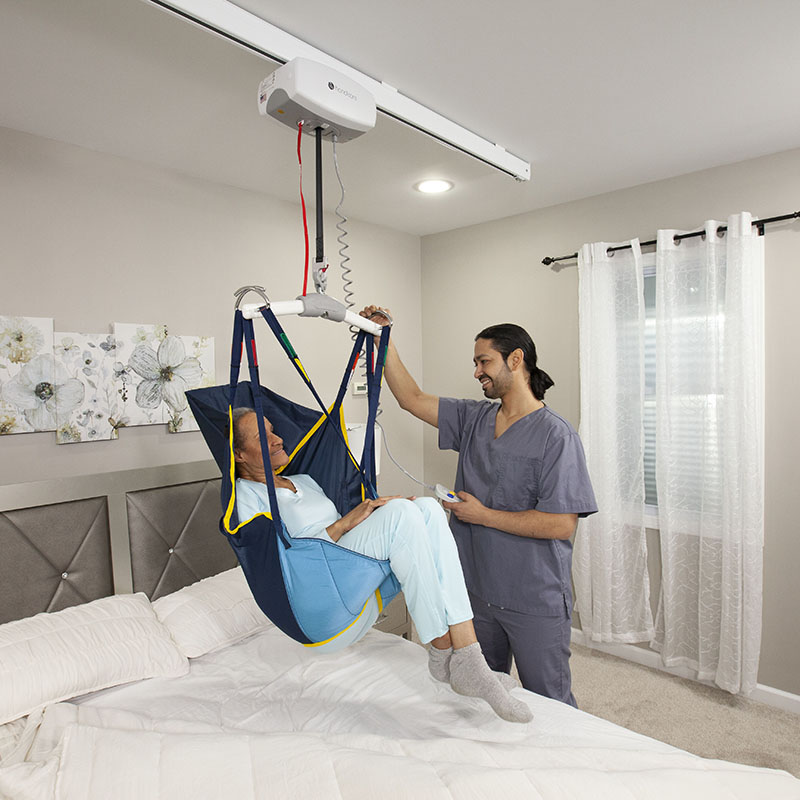The patient lift system is designed to assist caregivers and health professionals to safely and comfortably lift and transfer patients. These systems are vital for people with limited mobility like seniors, disabled patients, as well as those recovering from surgeries or injuries.

In the marketplace, there are various types of patient lifts, such as overhead Hoyer lifts as well as mechanical lift transfers mobility lifts, and others. This article will focus on the advantages of each of these systems for patient lifts.
Mechanical lift transfer
A mechanical lift transfer system is a type of patient lift that uses an electric or hydraulic system for lifting and transferring patients. It consists of a lifting device, a sling & a base on wheels. The lift unit attaches to the sling, which wraps around the patient. It it then lifts the patient from a lying or sitting position.
It is a safe way to transfer patients as it reduces the risk of injury to the caregiver as well as the patient. It also minimizes the physical stress on the body of the caregiver because the lift device handles the majority of the lifting. Furthermore, mechanical lift transfer permits easy movement even in tight areas, making it an ideal choice in home care settings.
Overhead hoyer lift
The overhead Hoyer Lift is a lift system that makes use of an overhead track to facilitate transfer of patients. It is comprised of a track mounted in the ceiling, a lifting unit connected to it and a sling which wraps around the patient.
The overhead Hoyer Lift is perfect for patients who have to move frequently. It provides a safe, efficient way of moving the patient from one location to another. It also facilitates the transfer from a chair bed to the wheelchair.
Since the lift hangs from the ceiling, it can create greater floor space. This is beneficial for small spaces or areas that have limited area for floor. Hoyer overhead lifts also accommodate heavier weight capacities which makes them ideal for bariatric patient.
Mobility lift systems
Mobility lifts assist patients who are unable to move around their home or different environments. They consist of a base unit with wheels and a lift arm with an attached sling. The patient is slung into the sling and then lifted by the arm that lifts.
Mobility lift systems are ideal for patients who require help with mobility but are unable to stand or walk with assistance. These lifts are a secure and safe way to transport patients, while protecting their autonomy and allowing them enjoy a healthy and fulfilling life.
Mobility lifts are mobile that is among their major advantages. Mobility lift systems can be easily transported from one location to another. This makes them an ideal choice for a variety of environments. Mobility lift systems require only minimal effort on the part of caregivers.
Choosing the best patient lift system
The consideration should be given to the mobility of the patient as well as their weight and size along with any environmental circumstances in which they’ll be utilized. Also, it is important to take into account the caregivers’ physical capabilities and limitations, in addition to the budget.
If you have a patient with limited mobility and the need to transfer frequently with the overhead Hoyer lift is an excellent alternative. It’s simple to use, safe, and efficient for patient transfers. It can be expensive and requires installation, therefore it’s more suitable for long-term health facilities.
Mechanical lift transfer systems are beneficial in any home care environment, because of their ease of use, their low physical demands on caregivers as well as the affordability. Of course, it’s important to spend the time to analyze your specific needs prior to investing in this kind of equipment. You can be sure that you are making the right decision by conducting a thorough research and consulting industry experts. After you have the facts then you can make an informed decision.
For more information, click mechanical lift transfer